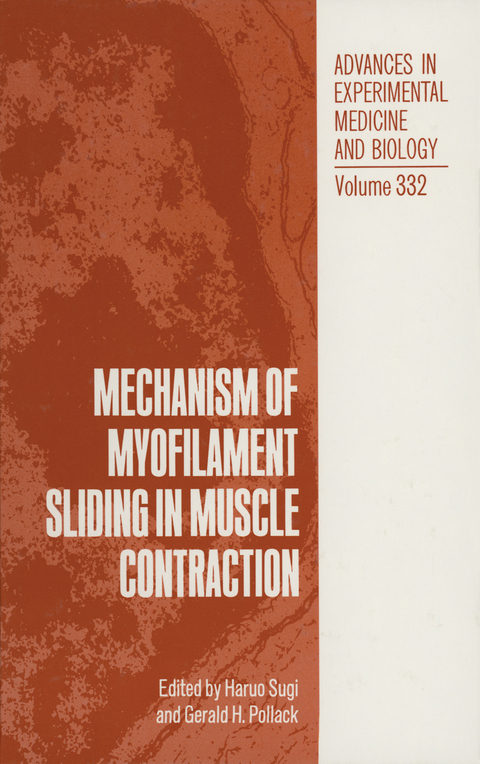
Mechanism of Myofilament Sliding in Muscle Contraction
Springer-Verlag New York Inc.
978-1-4613-6245-6 (ISBN)
Introductory lecture on muscle contraction.- I. Structural Basis of Myofilament Sliding Introduction.- II. Regulatory Mechanisms of Contraction Introduction.- III. Biochemical Aspects of Actin-Myosin Interaction Introduction, Obituary: Ken Hotta.- IV. Properties of Actin-Myosin Sliding Studied by In Vitro Movement Assay Systems Introduction.- V. Properties of Actin-Myosin Sliding and Force Generation Studied by In Vitro Force-Movement Assay Systems Introduction.- VI. Stractural Changes During Contraton Studied by X-Ray Diffraction Introduction.- VII. Kinetic Properties of Actin-Myosin Sliding in Muscle Studied by Flash Photolysis of Caged Substances and Temperature Jump Introduction.- VIII. Kinetic Properties of Actin-Myosin Sliding Studied with Demembranated Systems Introduction.- X. Kinetic Properties of Actin-Myosin Sliding Studied by Energetics Experiments Introduction.- Summary and Discussion of Poster Presentations.- Concluding Discussion Structural changes during contraction.- Muscle contraction mechanisms as studied with in vitro assay systems.- Regulatory mechanisms of muscle contraction.- The cross-bridge cycle in muscle contraction.- How much work from one cross-bridge cycle?.- Summary and Conclusion A. F. Huxley.- Participants.- Contributors Index.
| Reihe/Serie | Advances in Experimental Medicine and Biology ; 332 |
|---|---|
| Zusatzinfo | XVI, 866 p. |
| Verlagsort | New York, NY |
| Sprache | englisch |
| Maße | 170 x 244 mm |
| Themenwelt | Naturwissenschaften ► Biologie ► Biochemie |
| Naturwissenschaften ► Biologie ► Botanik | |
| Naturwissenschaften ► Biologie ► Zoologie | |
| Naturwissenschaften ► Physik / Astronomie ► Angewandte Physik | |
| ISBN-10 | 1-4613-6245-8 / 1461362458 |
| ISBN-13 | 978-1-4613-6245-6 / 9781461362456 |
| Zustand | Neuware |
| Haben Sie eine Frage zum Produkt? |
aus dem Bereich


